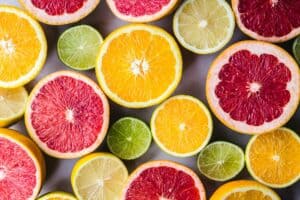Are we facing a paradigm shift?
Columns • What can an architect who lived and worked decades ago tell us about the food and cooking of today? John Wernbom takes some time in the library and starts thinking about the future.
The other day, I stumbled upon an old copy of the Gastronomic Calendar. It is a book that is published annually by the Swedish Gastronomic Academy and contains a collection of essays regarding everything that has to do with food.
I was sitting in my armchair and found myself with a copy from 1963. At the end of the book, there is a text that today would be something of a trend watch into the future. A gentleman by the name of H. Carlheim-Gyllensköld writes about ‘Tomorrow’s Cooking’.
Two things pop up in my mind: One: This will be interesting. Two: I will sit and giggle at all the foolish conclusions. Much like an old science-fiction movie from the same time that predicts flying cars and capsule food.
But am I wrong or what? Mr Carlheim-Gyllensköld is astonishingly sure-handed. Sure, he is not completely accurate. The fish of the future is apparently always fresh and transported by air from the fishing boats. With no exceptions.
It is an optimistic view that is conveyed and the author’s predictions are – as stated – astoundingly good. Carlheim-Gyllensköld predicts a future with a variety of dishes and ingredients. Deep-fried octopus and gratinated mussels are nothing to be surprised by and ‘the despicable cigarette smoking between the courses that ruins the culinary experience has vanished as if by a magic trick’.

A luxurious dinner of the future is not limited to the common sole, deer meat or a fillet of any kind. Cooking is something that interests and engages everyone, regardless of gender, age or role in the family. And we always want to learn more.
The text makes me reflect on our own time – and future. It makes me think of the role sugar has in food and the fact that we historically not have been able to criticize this indispensable ingredient. Sugar has almost been magical but this has largely been due to the absence of real alternatives with equivalent properties.
I asked a question the other day to Ola Broström, Innovation Manager at Bayn. Do you think the 2020s will be the decade when we will see a paradigm shift for sugar reduction and sugar compensation? He answered yes with no hesitation.
And if you think about it, it is not difficult to understand why. We have today high-intensity sweeteners, dietary fibres and sugar alcohols that together can give the sugar a good match. And research is ongoing and new ingredients pop up all the time.
You can even think of combinations of ingredients that not only mimic sugar but also excels sugar and fundamentally change our perception of what is perceived as sweet and tasty.

Maybe we will look at sugar with a romantic shimmer, just as we view an old fancy Cadillac with a pushrod V8 and chromed grill. Or common sole and quail for that matter. Our view of luxury and vanity has changed, so why couldn’t our view of sugar’s indispensability also undergo a shift?
What will the store shelves look like 2073? It’s, of course, impossible to make certain predictions. But if I’m half as sure-handed as H. Carlheim-Gyllensköld, I might see it as a feat. Perhaps I also have a future as a predictor of the future?
Please, share this article if you liked it.
[et_social_share]




